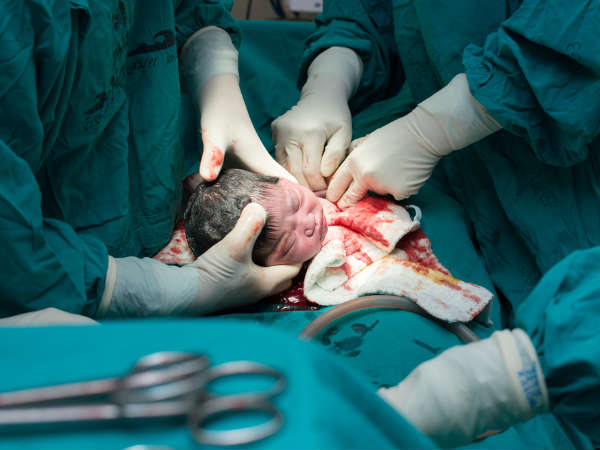Just In
- 11 hrs ago

- 11 hrs ago

- 14 hrs ago

- 15 hrs ago

Don't Miss
- Finance
 Rs 45/Share Dividend: Record Date In Due Course; Buy The IT Stock For Dividend Eligiblity?
Rs 45/Share Dividend: Record Date In Due Course; Buy The IT Stock For Dividend Eligiblity? - Sports
 Dominant Gauff double bagels Rus at Madrid Open
Dominant Gauff double bagels Rus at Madrid Open - Movies
 TRP Report Week 16: Anupamaa, Jhanak BEAT Yeh Rishta Kya Kehlata Hai, Ghum Hai. Top 10 Shows List
TRP Report Week 16: Anupamaa, Jhanak BEAT Yeh Rishta Kya Kehlata Hai, Ghum Hai. Top 10 Shows List - News
 MEA Dismisses US Human Rights Report On Manipur As 'Biased And Misinformed'
MEA Dismisses US Human Rights Report On Manipur As 'Biased And Misinformed' - Automobiles
 Royal Enfield Unveils Revolutionary Rentals & Tours Service: Check Out All Details Here
Royal Enfield Unveils Revolutionary Rentals & Tours Service: Check Out All Details Here - Technology
 Elon Musk’s X Is Launching a TV App Similar to YouTube for Watching Videos
Elon Musk’s X Is Launching a TV App Similar to YouTube for Watching Videos - Education
 AICTE introduces career portal for 3 million students, offering fully-sponsored trip to Silicon Valley
AICTE introduces career portal for 3 million students, offering fully-sponsored trip to Silicon Valley - Travel
 Escape to Kalimpong, Gangtok, and Darjeeling with IRCTC's Tour Package; Check Itinerary
Escape to Kalimpong, Gangtok, and Darjeeling with IRCTC's Tour Package; Check Itinerary
What Is Delayed Cord Clamping?
Long before hospitals became mainstream, midwives used to assist the mother to deliver her baby safely. There were certain practices quite common with the midwives around those times which would ensure the delivery of a healthy baby and the health of the mother. Some of these practices, in fact, do have scientific backing and are known to be very beneficial for the mother and the baby. One such practice is delayed cord clamping. Let us find out more about delayed cord clamping and its benefits.
What Is Delayed Cord Clamping?
When a baby is delivered, it is still attached to its mother via the umbilical cord, which is cut after delivery. The practice of delaying the process of cutting the cord after the baby is born is known as delayed cord clamping.

The procedure has gained wide importance due to its numerous benefits. While it is of common knowledge that the umbilical cord contains a lot of red and white blood cells along with stem cells, delaying the procedure of cord clamping can help ensure that all these reach the baby.
Contrary to popular belief, the blood in the cord is not the excess blood. In fact, it accounts for 1/3rd of the total volume of blood of the baby, while the rest of the 2/3rd is in its body. Therefore, it is important to ensure the complete transfusion of the blood from the cord to the baby before it is clamped.
How Long Can You Delay Cord Clamping?
Usually, the standard procedure calls for the doctor to cut the umbilical cord after about 20-30 seconds of delivery. But in case of delayed cord clamping, this time is extended to about 5 minutes.
In fact, the World Health Organisation recommends clamping the cord for at least one minute after birth or until the cord stops pulsating.
However, it is safe to wait for the cord to transfer all the blood to the baby, after which it may turn white and limp. This is the safest time to cut the cord.

Can You Delay Cord Clamping With A C-section?
Delayed cord clamping can safely be done after a C-section as well provided the baby does not have major issues like a low heart rate, severe foetal distress or placenta abruption. In such cases, saving the baby's life would take precedence.
If you are opting for a selective C-section, you may have enough time to discuss the procedure of delayed cord clamping with your doctor as there are quite a few concerns regarding the procedure during a C-section when compared to a normal birth. Your doctor needs to have prior experience with the procedure.
Another way to ensure your baby receives all the cord blood benefits is to talk to your doctor about milking the cord blood. This procedure involves the doctor pushing the cord blood away from the placenta and towards the baby. This procedure is rather fast and may take about 30-60 seconds compared to the natural transition.

What Are The Benefits Of Delayed Cord Clamping?
The transition from the womb to the world may be quite difficult for your little one. But nature has that covered as well. Your baby will receive everything it needs to face the brave world from you. Apart from the warmth and food, your baby will require quite a lot of immune cells from you to fight off infections and other illnesses.

Delayed cord clamping indeed has a lot of benefits:
- Babies who undergo delayed cord clamping are known to contain 60% more red blood cells in their bodies compared to other babies who undergo immediate cord clamping.
- New studies have suggested that delayed cord clamping in babies results in increased neurodevelopment, even years after birth.
- Babies who undergo cord clamping for an average of three minutes after birth are known to have higher social and fine motor skills as children.
- The biggest advantage of delayed cord clamping is lower anaemia rates. Iron is the most important element required for growth in babies. Delayed cord clamping results in the increase of iron-rich cells reaching the baby due to the cord pulsating. This helps in bodily repairs and also amps up the baby's immune system a few notches.
- Although it is beneficial for all, delayed cord clamping may just be a matter of life and death for preemies as receiving all goodness from their umbilical cord gives them a higher chance to lead a normal life.

What Are The Potential Risks Of Delayed Cord Clamping?
If you are mighty impressed with all the benefits of delayed cord clamping, you may want to go through the potential risks of the procedure as well -
- The first disadvantage of delayed cord clamping is the risk of jaundice. Studies have shown that babies with delayed cord clamping have 5% chance of developing jaundice. Therefore, this procedure should totally be avoided in babies who show signs of liver problems immediately after birth.
- In rare cases, the backflow of blood may create problems for the newborns.
- The procedure should completely be avoided if the mother is HIV positive as delayed cord clamping may increase the risk of the baby contracting the disease.
There are always two sides to the coin. It is always better to inform your doctor about your concerns and discuss with them at lengths. While delayed cord clamping is increasingly getting popular, the health of your baby and you should always take precedence.
-
 pregnancy parentingFrom Contractions To Water Breaking: Knowing When It's Time For The Hospital During Pregnancy
pregnancy parentingFrom Contractions To Water Breaking: Knowing When It's Time For The Hospital During Pregnancy -
 pregnancy parentingAre Epidurals Painful? Should Every Pregnant Woman Consider It During Delivery?
pregnancy parentingAre Epidurals Painful? Should Every Pregnant Woman Consider It During Delivery? -
 pregnancy parentingMyths vs Facts: You Can Induce Labour By Drinking Castor Oil
pregnancy parentingMyths vs Facts: You Can Induce Labour By Drinking Castor Oil -
 pregnancy parentingVaginal Tears During Childbirth: How To Take Care Of It At Home?
pregnancy parentingVaginal Tears During Childbirth: How To Take Care Of It At Home? -
 pregnancy parentingWorld Preeclampsia Day: Early Warning Signs Pregnant Women Should Know
pregnancy parentingWorld Preeclampsia Day: Early Warning Signs Pregnant Women Should Know -
 pregnancy parentingPregnancy: When To Start Exercise After Normal Delivery With Stitches?
pregnancy parentingPregnancy: When To Start Exercise After Normal Delivery With Stitches? -
 pregnancy parentingWeight Loss Tips After A C-Section
pregnancy parentingWeight Loss Tips After A C-Section -
 pregnancy parentingIs Normal Delivery Possible After A C-Section?
pregnancy parentingIs Normal Delivery Possible After A C-Section? -
 pregnancy parentingVaginal Delivery: Benefits And Complications
pregnancy parentingVaginal Delivery: Benefits And Complications -
 prenatal6 Signs You Are Nearing Labour: What To Do
prenatal6 Signs You Are Nearing Labour: What To Do -
 postnatalPooping After Birth: Everything You Need To Know
postnatalPooping After Birth: Everything You Need To Know -
 prenatalHow Does C-section Delivery Affect The Mother's Health?
prenatalHow Does C-section Delivery Affect The Mother's Health?


 Click it and Unblock the Notifications
Click it and Unblock the Notifications




